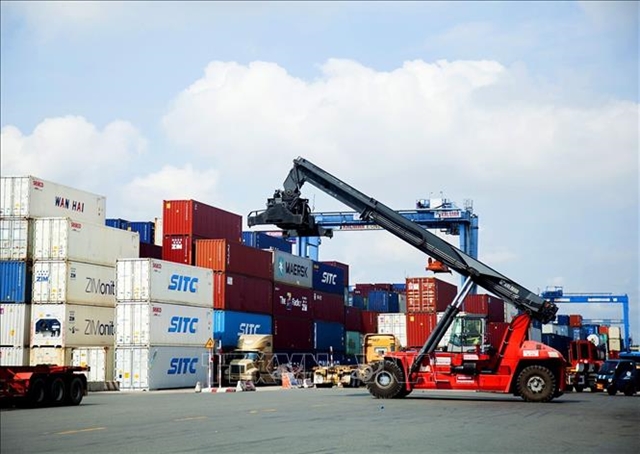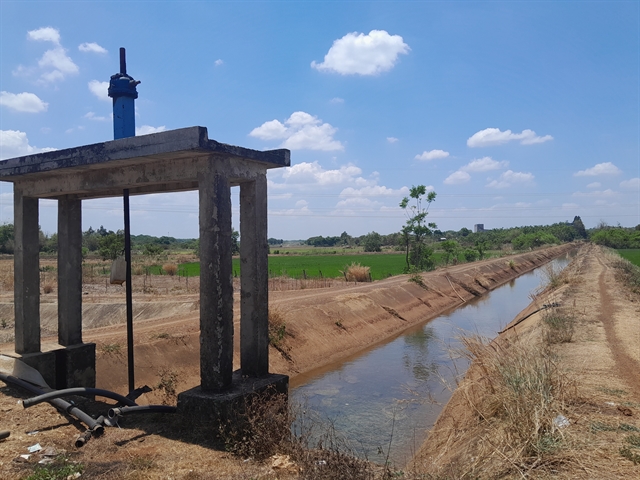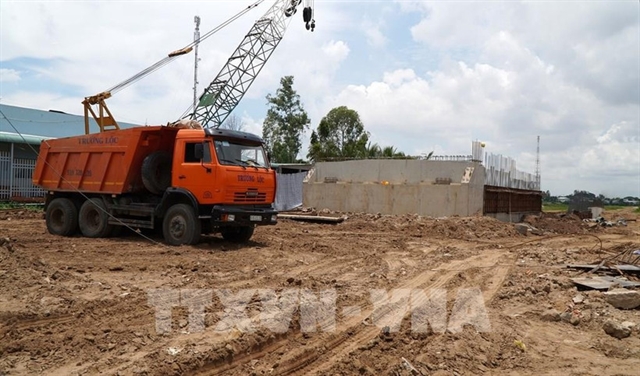 Society
Society

 |
| A canal that takes water from the Cần Đơn Reservoir in Bình Phước Province’s Bù Đốp District for irrigation of farmlands during the dry season. – VNA/VNS Photo K GỬIH |
BÌNH PHƯỚC — Bình Phước Province is set to construct six new irrigation projects and upgrade 17 existing ones between 2026 and 2030 to enhance water supply and irrigation efficiency.
The southeastern province aims to provide irrigation for 85 per cent of rice fields cultivating two crops a year, 70 per cent of dry crops and 90-95 per cent of fruit trees and long-term industrial crops by 2030.
It currently has 73 reservoirs and dams that have either been newly built or upgraded.
These help irrigate 9,286 hectares of farmlands and supply 133,642 cubic metres of water daily for household use.
This year the province plans to increase its water supply for household and industrial use by 7,200cu.m a day.
By 2030 it aims to expand the area of irrigated farmlands by 500ha and increase the supply to waterworks to 37,100cu.m a day.
The total investment required for upgrading and developing the irrigation system and water exploitation for agricultural and household use is estimated at VNĐ10.4 trillion (US$407 million) by 2030.
Of this, VNĐ6.68 trillion ($261 million) is expected to come from private sources.
Trần Tuệ Hiền, Chairwoman of the Bình Phước People’s Committee, said the province is working to maximise water release efficiency from reservoirs on the Bé River and the Dầu Tiếng Reservoir.
The province is gradually expanding irrigation along both banks of the Bé River, the right bank of the Đồng Nai River, and from the Phước Hòa and Dầu Tiếng reservoirs by implementing effective and sustainable solutions such as setting up new pumping stations.
It is also carrying out works to improve direct water intake from reservoirs and enhance their canal systems, particularly the Cần Đơn Reservoir in Bù Đốp District.
Investment priorities
Bình Phước prioritises irrigation projects included in its medium-term public investment plan and those receiving funding support from the Government.
This year it is focusing investment in programmes and projects aimed at expanding irrigated farmland by 8,149ha and on remote areas, ethnic minority communities with limited water access, regions with inadequate water supply infrastructure, and key economic zones.
Investors with expertise in water supply development are encouraged to take part in regional and inter-district water supply projects.
The province is conducting groundwater surveys to assess the impact of extraction on land subsidence and water pollution.
Based on these findings, a sustainable groundwater management plan will be developed and incorporated into the province’s overall water resource strategy.
Bình Phước is among four localities approved by the Government in February 2021 to implement the climate-change adaptive irrigation modernisation project.
The project, funded by the Asian Development Bank, has a total investment of US$70 million, with Bình Phước allocated $20 million for four key components.
These include upgrading and modernising the irrigation network around Dầu Tiếng Reservoir in Hớn Quản District and Phước Hòa Reservoir in Chơn Thành District, improving the canal network downstream of Cần Đơn Reservoir, and upgrading irrigation infrastructure at reservoirs and dams across Lộc Ninh District to support agriculture and household use.
Bình Phước, the largest southern province, has 616,307ha of farmland.
With its fertile soil, primarily red basaltic, and mild climate, the province is highly suited to cultivating long-term industrial crops such as rubber, cashew, pepper, and fruits besides livestock and poultry farming.
It is the country’s largest producer of rubber and cashew. — VNS




